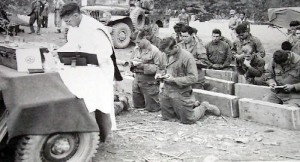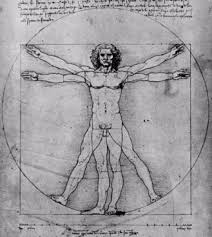There's a story I heard about a special family pot roast recipe. And the recipe would include the type of meat required, the ingredients needed, how long to cook the meat and at what temperature. And one of the steps involved cutting six inches off the end of the roast before placing it in the roaster. Every family that had a copy of the recipe for this special meal would follow the instructions to a tee. It was such a delicious and memorable meal to enjoy that no one dared making any changes or substitutions. One year when the family had gathered for a holiday meal the question was posed to grandma, ' why do we cut six inches off the end of the roast?'. And grandma's answer was that otherwise the meat wouldn't fit into the roasting pan. There can be other things in life where what we've been told or always believed isn't actually the case. Or sometimes not even necessary. For example, think about what you've been told about low back pain. It used to be we were supposed to spend the day in bed and not move. And once we were able, we were then encouraged to do some stretches to prevent a future occurrence. Neither of these are the best plan to help with low back pain. More specifically, a number of people may have back pain in the morning. This can happen because we've been in bed for up to 8 hours and the vertebral discs are unloaded and not subjected to the same vertical force of gravity. Without the vertical loading on the discs while sleeping the discs can accumulate fluid and swell, increasing their size. A larger disc then has less physical space to the adjacent vertebrae. With less physical space between the...
A Great Drill For Low Back Pain
Low back pain is something almost everybody experiences at some point in their life. And once we've suffered through some low back pain we usually want to know what caused the pain and what to do about ensuring it doesn't happen again. And while there may be a variety of causes and types of low back pain there are some things in common to all. First of all, in order to prevent future episodes of low back pain we want to to ensure we have a solid foundation and can move through an optimal range of motion. To look at the first condition for a solid foundation we need to consider our posture. Do the joints of the body stack evenly like pieces of lego? Or are there some areas where they are deviations from optimal alignment and smooth curves? This may get tricky for the lay person because how are they to know what is optimal? And often times manuals and references used technical terms which can confuse even people who work in the fitness industry. In this case I like the way Dan John describes the relationship of the hips and pelvis with the torso. He has described this as a box (torso) sitting on a bowl of water (hips & pelvis). Does the box sit squarely on the bowl of water? And is any water leaking out of the bowl of water? If so, is water leaking out of the front of the bowl (anterior tilt) or the back of the bowl (posterior tilt)? If the rib cage is flared or tilted up than the box is not sitting squarely on the bowl of water. And if we are spilling water than we know how to correct this problem as well. The solution comes via the kneeling plank. It...
Deadlifts Are Bad
So this week we had a client that was seeing a chiropractor and was informed that there was a particular exercise that no one should be doing. And based on the title of this post you already know what the exercise is. But we train a number of our clients with deadlifts. And we don't have DC after our names. So what does this mean? Well since Breaking Bad is done I know you've got nothing else to do but stick around and find out the truth. Which is that deadlifts are not bad. Nor are deep squats. Or bench presses. Or biceps curls in the squat rack. (I threw that last one in as a trick to see if you're still paying attention. I do my biceps curls on the Olympic platform) In fact there is no such thing as a "good exercise" or a "bad exercise". There is only exercise done with proper form or improper form. Simple as that. Because here's the thing...we all deadlift anyways. A deadlift is basically a hinging movement at the hips. So whereas a squat would involve most of the bending to happen at the knees a deadlift involves most of the bending at the hips. Imagine all of the times you may hinge (deadlift) in a day: * picking up your suitcase off the belt at the airport* taking a bow as conductor of the symphony orchestra* closing your gar door when your arms are full of groceries But I would go further than to simply disagree with the premise that deadlifts are bad for you and should be avoided but they are good for you and should be in most people's programs. Why are deadlifts important? Because they promote the ability to remain in extension. Flexion on the other hand:* usually...
Lessons Learned from Mike Robertson - Part II
- Chris Collins
- Training
- 1865 Hits
- 0 Comments
-
In the last post I introduced a discussion about body awareness. And what I meant by this was understanding which muscles were firing, when they are firing and how they are firing. The reason this is so important is that many of us having compensations or deficiencies of some type. Think about it. The aches and pains that we get from time to time are partly due to the strain we put our body under when it is out of alignment. And when we live with these aches and pains for long enough we can sometimes become a little bit desensitized to the feedback our body is trying to give us. For example if you've had a chronic low back problem you may not think about it all the time. But if someone asks you how it is and you stop and think about it for a second you'll realize it simply hasn't corrected itself but instead you learned to block it out somewhat in order to get through the day. And you aren't consciously thinking about it until someone asks you about it or it gets worse. So let's jump ahead and assume that someone was able to point out where it is that you're out of alignment and how to correct this alignment issue. Perhaps it's a lack of frontal plane (think side to side) glute activity and by firing this muscle helps to restore your alignment and take stress off your joints that were 'picking up the slack'. As well, you were also made aware of how you will alter your body position to cheat when your glutes get tired and you don't want them to work anymore.This would all be very useful info to you. So how do you make sure to ingrain this process and ensure...

